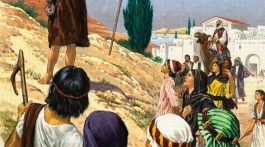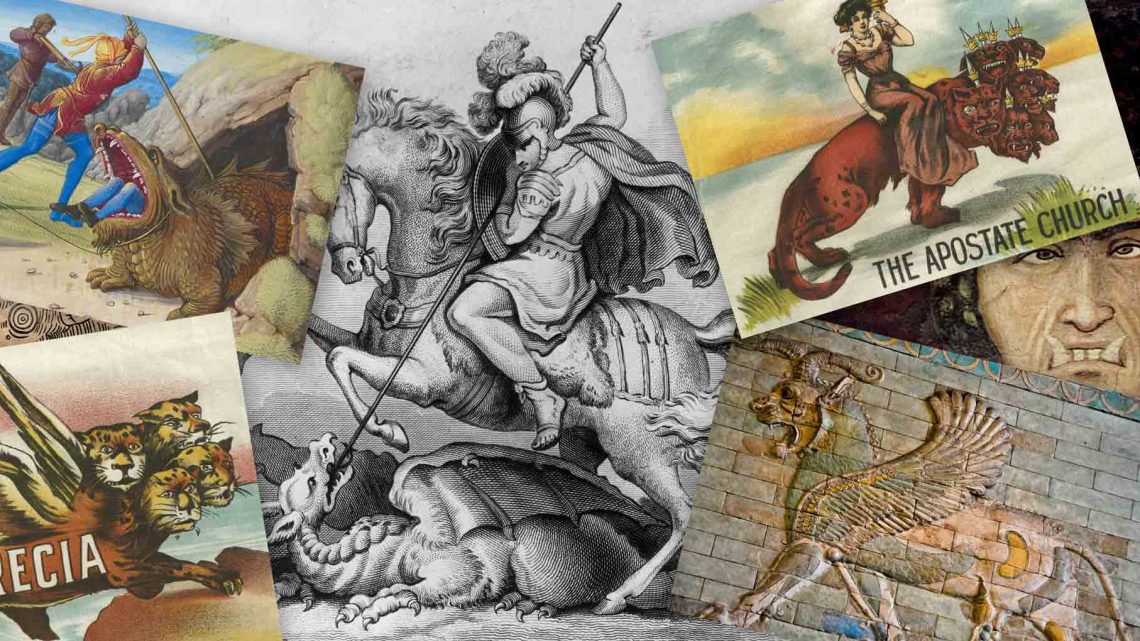“Are monsters always evil?”
I watched my fellow students begin discussing Dr. Seth Pierce’s question with excitement. Those walking by the lecture hall might have found this an odd way to start the first day of a semester, but I wasn’t surprised. This was Monsters, Faith and Pop Culture, and I was getting exactly what I signed up for.
Pierce called our attention back to the front of the room, before continuing, “A monster is any entity that we consider ‘other.’” He flipped through a slideshow of various monsters from Christian history: biblical monsters like Leviathan, creatures from medieval bestiaries and even beasts from Seventh-day Adventist advertisements for evangelistic meetings. “We’re going to look at the monstrous and difficult in Scripture, Christian history and Christian life, as well as how pop culture uses monsters to shape our world views.”
Oh, thank goodness, I thought. Even though I registered for the course to learn more about monsters and monster theory, I was glad that we wouldn’t be dwelling on gory and horrible things. As Pierce laid out what we would be covering during the semester, I scribbled down notes. This is going to be the coolest class ever!
Monsters, Faith and Pop Culture was offered for the first time during the spring 2022 semester. Approximately 50 students registered for the class, so it had to be held in the Lang Amphitheater in the Krueger Center. Since the class could be taken to fill general education requirements, my classmates came from many different majors.
Drawing on his background as both a communication scholar and a pastor, Pierce taught the class from a uniquely Seventh-day Adventist perspective, showing how the monsters of Daniel and Revelation, the Satanic panic of the 1980s and monsters in contemporary culture affect our denomination.
I asked Pierce why learning about the monstrous is important for Christians. He said, “You’ll see the monstrous in our evangelistic materials and in medieval Christian speculation on monsters and monster races that continues to have an influence on how people perceive God, Scripture, faith and those different from them. It’s important to address these things from a Christian world view to understand them better. We have to address the difficult monstrous moments in Scripture and in Christian life and figure out how they fit into our picture of a loving God.”
Although Christianity and monsters have always been connected, scholars did not begin seriously studying the relationship between the two until relatively recently. The American Academy of Religion is currently in a five-year symposium examining the roles that monsters and the monstrous play in religion. With a focus on the interplay between monsters and Christian faith, our class explored the latest research. Several guest lecturers presented to us about monsters in religion, including Dr. Heather Macumber, author of Recovering the Monstrous in Revelation; Dr. Emily Zarka, host of the PBS show “Monstrum;” and Dr. Brandon Grafius, author of Reading the Bible with Horror.
As the semester went on, one Bible verse was repeated so much that I inadvertently memorized it: “Do not judge by appearances, but judge with right judgment” (John 7:24). In class, we focused on why certain things are considered monstrous and what that means for us as Christians. I quickly learned not to dismiss monsters as simply too gross or scary, but to think critically and “with right judgment” about what they symbolized.
Monsters are products of the cultures that create them. They point to what a society experiences, values and fears. For example, monsters devoted to destroying the order of things (known as chaos monsters) are found in myths and legends all across the ancient world. These monsters, such as Leviathan, are often associated with the waters that covered the world before it began. Chaos monsters represent the presence of chaos in an otherwise orderly world and embody the common human fear of destruction.
Just like ancient monsters can tell us about the cultures they came from, the monsters we find in popular culture can show us what our society values and fears. “Popular culture is becoming a more credible source of inquiry in academia because we realize that ideologies and world views are presented through pop culture and consumed through pop culture,” said Pierce. “Even though it may not feel like high art or something important to look at, it’s often the force that is teaching people about religion, politics and other cultures. It’s important to give people tools as they consume books or movies or video games to be able to see what is actually being said and how it’s shaping opinions and thoughts—knowingly or unknowingly.” Monsters like vampires, zombies and werewolves reveal facets of the culture we live in, sometimes without us realizing what they are saying.
“In class we look at the horrible things that happen when we falsely label other people monsters and what that enables us to do,” said Pierce. “Some examples include the crusades, the propaganda of World Wars I and II and the Salem witch trials. We have to be very careful with who we label as monsters and understand the social consequences of doing so.”
For the final project, each of the students chose a monster to analyze and present. Many chose monsters that affected them as children, such as Darth Vader, Cookie Monster and Dracula. Pierce shared that the most memorable monster from his childhood was the witch from Hansel and Gretel.
“I saw the witch, played by Joan Collins, for the first time on Shelly Duvall’s ‘Faerie Tale Theater,’ and I was terrified for years. I still feel a bit of nostalgic apprehension every time I see an adaptation of Hansel and Gretel, even though every version I know of has a happy ending. The story scared me as a kid, but it was a story that I always wanted to hear. It was a safe kind of scary because of the happy ending.”
After taking Monsters, Faith and Pop Culture, I prick up my ears whenever I hear something described as a monster. I’ve learned that it isn’t enough to dismiss things as frightening or bad. Instead, I try to think critically about what I am supposed to be afraid of and why, so that I can follow Christ’s command to “judge with right judgment.”
Monsters, Faith and Pop Culture will be offered again during the 2022-2023 school year.
Annika Cambigue is a senior communication and English major at Union College.









